Liturgy is powerful. It unifies the vastness of beliefs and structures within the Christian tradition around a shared interest in exploring the God-Human relationship in light of the work and ministry of Jesus. It is expressed through the Christian Calendar, in which we participate in the fullness of the Christian story, and through the weekly Worship Service, which gives the structure of Proclamation, Confession, Word, and Eucharist to our daily participation.
And here is what I think is so wonderful. In the liturgy of the Church, the proclamation of our faith goes before us, speaking words on our behalf and setting these words within the diversity of beliefs that make up a working Church community. For me personally, it freed me up to wrestle with my faith, knowing that in spite of my struggles and my doubts, the liturgy can speak the truth about God on my behalf.
The liturgy of the Church persists through the seasons of our lives rather than being dependent on it, and regardless of where we find ourselves in the different seasons of our life, it beckons us to set these experiences within the story that is unfolding through the seasons of the Church calendar, beginning with Advent: awaiting and anticipating the arrival of the Christ child.
But how we live this out remains unique to who we are and how we experience it. I recently listened to a podcast episode from Think Christian, which recognizes that God’s story is being told whether we are aware of it or not. So it is perfectly fitting that this particular episode encouraged us as listeners to consider art and culture as “liturgy,” seeing it from the vantage point of the God-Human relationship.
Which got me thinking. Over the course of my life I have grown and developed a deep appreciation for film and the power of visual storytelling and the opportunity for God to use it to impact, inform and even transform my life. If this is a language I am able to speak and a language I am able to understand, what would it look like if I was intentional about making film a part of my own liturgical practice? I could use film to enrich my experience of the liturgy and give greater meaning to the films I see.
What is Advent?
Advent is built around the idea of waiting and anticipating God’s breaking through the darkness with the promised light of the Christ Child. Over the four weeks of Advent, each Sunday recognizes a specific element (or virtue) of this act of waiting and anticipating through the lighting of a single, symbolic candle. There is a gradual progression to the way these four weeks unfold, with each virtue bringing us closer and closer to the light of Jesus’ birth, which we celebrate on Christmas Eve (and Christmas morning). I’ve selected six movies to represent these four “candles,” Christ’s birth, and Christmas morning.
In considering these films, one thing that I kept in mind was this working tension between our reality and our expectant hope. Recognizing the darkness is as important as seeing the gradually unfolding light, with both able to inform what it is to wait and anticipate as virtuous people.
Advent Films
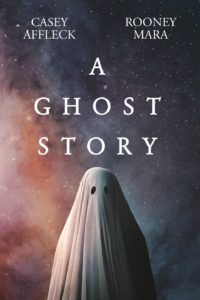 HOPE (December 1st, 2019)
HOPE (December 1st, 2019)
Film: A Ghost StoryWe cannot anticipate the promise of Jesus without the hope that the light will break through the darkness, and the first candle sets the coming of Christ into direct relationship with the prophetic voice that foretold Jesus’ arrival.Facing the darkness head on, A Ghost Story lingers as a sentiment of an unfinished story. Whereas the similarly focused Personal Shopper (released in the same year) gives us the perspective of someone who is chasing after the darkness of its lingering and allusive ghostly character in the hope of finding the light, A Ghost Story tells this same story from the perspective of the ghost, whom we see trying to shine light into the darkness that he left behind. The reason I chose this film to reflect hope is that it offers us a picture of two individuals lost in the dark and trying to find the light. In their midst is a note, which over the course of the film becomes symbolic for this hope they are looking for. But what this film captures so intimately and expressively is the notion of time as that which holds us captive in our waiting and our anticipating. As I wait and as I anticipate Christ’s arrival, A Ghost Story is a good reminder that hope exists precisely because the darkness persists.
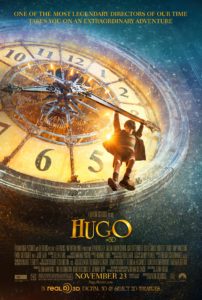 FAITH (December 8th)
FAITH (December 8th)
Film: HugoThe second candle recognizes Advent as a journey, symbolizing the virtue of faith in what God is doing and the places he is calling us towards even when we can’t see clearly.As it was with A Ghost Story, time is a central theme in Hugo. It tells the longing story of a young orphaned boy named Hugo, who is forced to contend with the darkness of his own present reality by engaging the unfolding of a mystery. In this sense, Hugo offers me a picture of what it looks like to put my faith in something I do not yet see clearly. As time persists, challenges overwhelm and what light there is remains elusive and dim. And yet, as we hope that this mystery will reveal itself to us, faith is what keeps us moving forward. In Hugo, the key signifying his faith reframes his perspective on the mystery, and as the mystery unfolds Hugo becomes a powerful reminder that faith is what endures when hope feels lost; and that in anticipating the coming Christ, what is being revealed in this light is a greater sense not only of the journey of Advent, but of the light illuminating the story to which we truly belong.
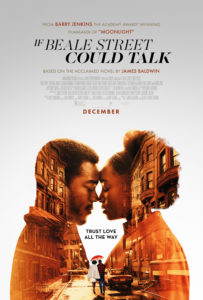 JOY (December 15th, 2019)
JOY (December 15th, 2019)
Film: If Beale Street Could TalkThe third candle calls us to find joy in our present circumstances in light of the ways God has chosen to enter into our darkness and walk with us through it. It sees our present reality and leads us towards the promise of future restoration.The characters in If Beale Street Could Talk, all bound by their current reality in one form or another, are at the hopeful work of faithful anticipation. This is the same hopeful work that we find in the season of Advent. The two central characters in this film are bound to their reality but also desperate to hold on to a belief that tomorrow can be (and will be) better. As characters they embody the idea that waiting and expectation is virtuous living, facing the darkness but also stepping into the light at the same time. And the one thing that exudes from this exercise, from this journey they are on, is this infectious and illuminating sense of joy, and particularly joy in the promise of a child.
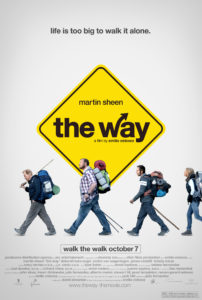 PEACE (December 22nd, 2019)
PEACE (December 22nd, 2019)
Film: The WayThe fourth candle aligns us with the proclamation of the Angels in declaring “peace on earth.”Having journeyed to the place where his son died in an effort to retrieve his body, Thomas Avery discovers that this place is actually the starting point of a popular spiritual pilgrimage. He soon finds himself embarking on this trail himself, a journey that puts him into contact with different people each carrying their own burdens. This journey opens him up to the idea of finding true peace in the midst of his darkness, which comes from submitting his burdens to this peace driven process.John the Baptist referred to Jesus as the Way, recognizing that one who is greater than him was coming to show us the Way to peace. It is a journey that Jesus will soon invite us to take with him, one that will lead to the Cross. But in this moment, it is the child that introduces us to this path and gives us a renewed vision for the world ahead. In a similar sense, it is his own child that brings Thomas to the foot of this path with renewed anticipation for what lies ahead. And it is at the foot of this path that we discover a baby in a manger, the gift of peace waiting to be embraced.
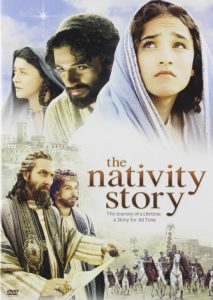 CHRIST CANDLE – Christmas Eve (December 24th, 2019)
CHRIST CANDLE – Christmas Eve (December 24th, 2019)
Film: The Nativity StoryA perfect film to capture the story of Jesus’ birth. This quiet, astute drama walks us through some of the political backdrop that formed Jesus’ arrival while centering us on the key characters in the Christmas story. And it leads to a powerful final act in which we are given an image of the light finally breaking through the darkness. Peace has arrived on earth.
- CHRISTMAS DAY (December 25th, 2019)
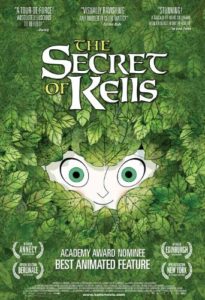 Film: The Secret of Kells
Film: The Secret of Kells
“Everything in this life is mist.” The Secret of Kells is an achingly beautiful and incredibly human portrait of what it means to face the “mist” that clouds so much of our lives and our world everyday, and to learn to allow the mist to teach us what it means to see with greater clarity and vision, especially in times when even our greatest strength- the faith we have been given in things seen and unseen, seems all but lost as well. This means facing the darkness. It also means facing our own limitations. And when we do, that’s when Christ is able to lift us up and light the way forward. The Secret of Kells is ultimately a story about the light breaking through in a powerful way.
• • •
Of course, these are films that resonated for me personally. For each individual these would be (and could look like) an entirely different experience. The greater point of this exercise made public was to engage with the idea of seeing film as liturgy, and if that is something that feels worthwhile to you, perhaps there is room to begin to consider your own list of films, or even consider participating in the liturgy of the Church if you (like me) were and/or are not familiar with the larger Church tradition.
What movies are part of your “Advent Liturgy Watchlist?”

1 comment